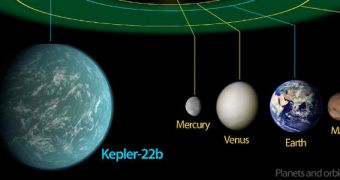Studies published thus far have provided sufficient arguments that life as we know it would have the highest chances of emerging on planets located in their star's habitable zones. These are areas around each star where temperatures are right to support liquid water. A new study now shows that chemistry also plays a role here.
Habitable zones may therefore be determined not only by distance and temperature ranges, but also by the chemical composition of specific sectors in a star system. The main difference between stars comes from the objects themselves, from the amount of heavy chemical elements they contain.
All stars feature trace amounts of chemicals other than hydrogen and helium, but the proportion of these elements is apparently essential to determining the exact location of that particular star's habitable zone, Space reports.
Chemicals such as calcium, sodium, magnesium, aluminum and silicon all proved to play important roles in determining the length of time a star features a habitable zone. Oxygen was found to be the most important chemical player in this equation.

 14 DAY TRIAL //
14 DAY TRIAL //